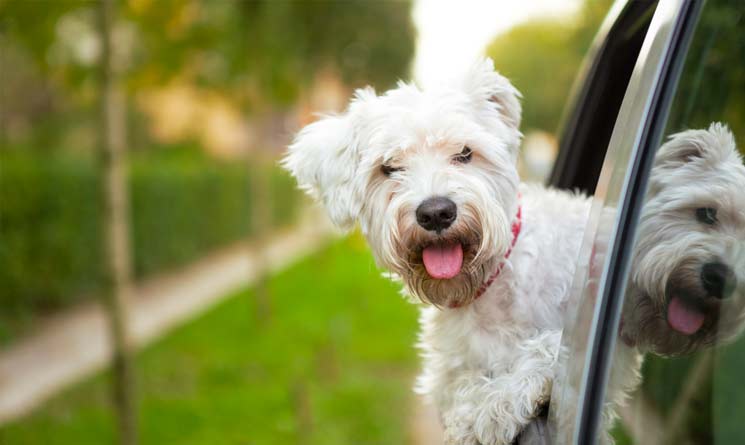Sometimes, you just want to bring your pet along.
But before you decide to make your pet your traveling companion, you should really consider the pros and cons. If you’re going to a place where you’ll be out most of the day and not spending much time with your furry family member, it might make more sense to leave your pet home.
If you’re going on a camping trip or staying in a cabin by a lake, your dog might just have the time of his or her life!
Of course, cats will always be happier at home, provided they have someone to keep their water fresh and change their litter box as needed.
If you do choose to vacation with your family pet, here are some tips to follow:
TRAVELING BY CAR
Go on a trial ride. Never went on a long trip with your pets before? Take a few shorter drives and gauge how they react. Do they get anxiety or restlessness? It’s good to have a general idea of your pets’ travel habits before you embark on a cross-country journey.
Don't let your pets roam inside the car. For everybody’s safety, it’s important that pets are secured in the backseat while they’re in the car. Using a blanketed crate or a carrier secured with a seat belt will ensure that they remain comfortable and stay safe in case an accident occurs, as well as keeping them from distracting you when you’re behind the wheel.
Make sure to make frequent pit stops. Animals can get cramped while hanging out in their crates. To ensure that they’re happy and comfortable, take rest stops every 2-3 hours so that your pets can relieve themselves and get a little exercise.
Never leave your pet alone in the car. Any loving pet parent knows this, but just be sure you never leave your pet alone in the car. Temperatures inside of an automobile can skyrocket to dangerous levels after just a few minutes in a hot car if the windows are shut, leaving pets in grave danger of heat exhaustion, breathing problems and death.
TRAVELING BY PLANE
According to the Humane Society, its recommended that pets never travel by airplane unless absolutely necessary. Driving is always a better option for them, but if you can’t travel by car, your pets are likely to be happier and healthier if you leave them with a family member, a pet sitter or put them in a kennel back home. But if you do fly, follow this advice:
Choose the cabin. Make sure to contact the airline well in advance for permission to accommodate your pet in the cabin. Generally, most airlines allow a cat or a small dog in the cabin for an additional fee. They also make concessions for service and emotional-support dogs. Contact your airline for further details about their pet policies.
Do your research if your pet must go cargo. Letting your pet travel via the cargo hold is not ideal. It’s definitely not recommended for brachycephalic animals (or those with “pushed in” faces) such as pugs, bulldogs or Persian cats, because the risk of oxygen deprivation and heat stroke is higher for animals that have short nasal passages. To ensure that your pet has a safe experience, make sure that you follow some of these tips:
- Always fly direct
- Always take the same flight as your pet
- Request to watch your pet be loaded and unloaded
- Let your flight captain know that a pet is on board
- Choose flights that will accommodate the weather
- Do not feed your pet four to six hours before the flight
- Check your pet as soon as you land and are in a safe place
Make sure that you check your airline’s safety reports regarding their previous experience with animal travel.
TRAVELING BY SHIP
In general, very few cruise lines allow you to bring pets on board unless they are assistance animals. Contact your cruise line well in advance to inquire about their policies regarding pets, as some do have kennels below decks.
For more travel tips read: Travel Tips: Get the Most Out of Your Next Trip




